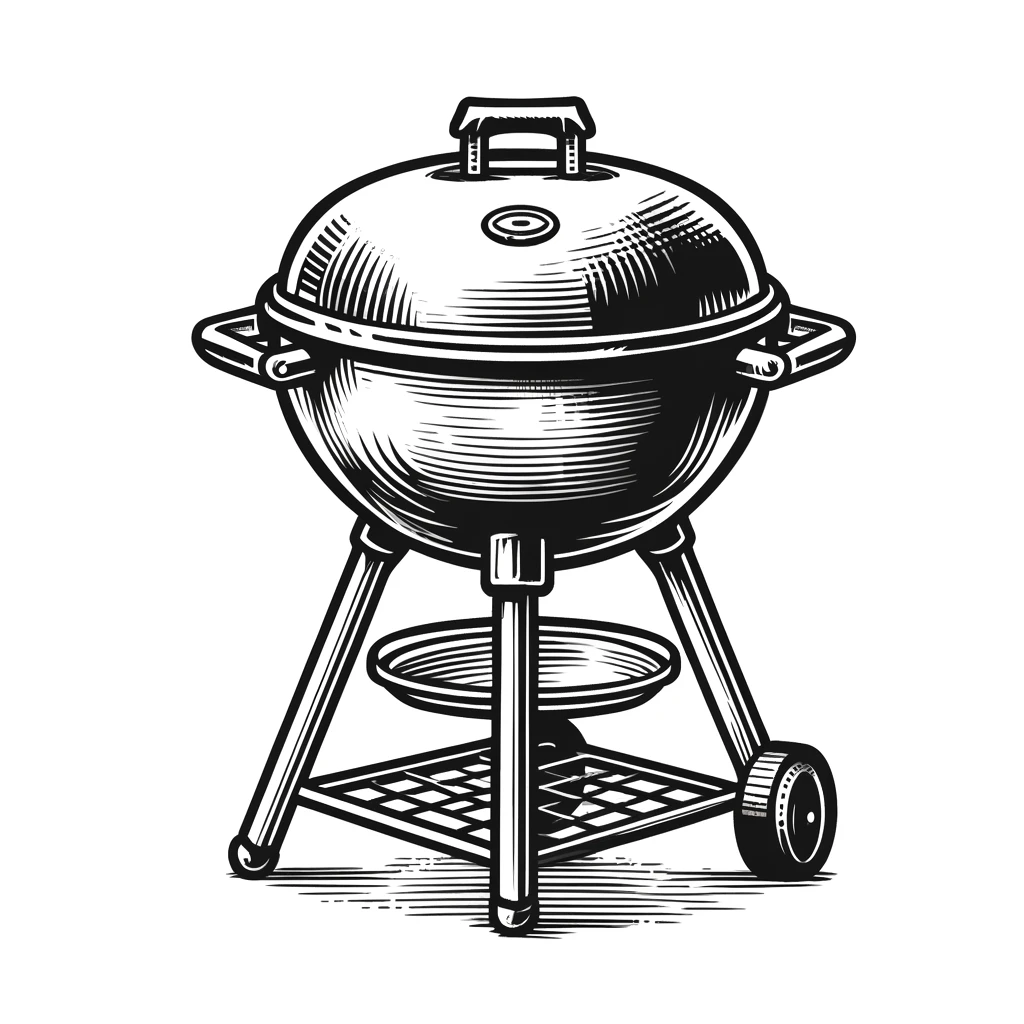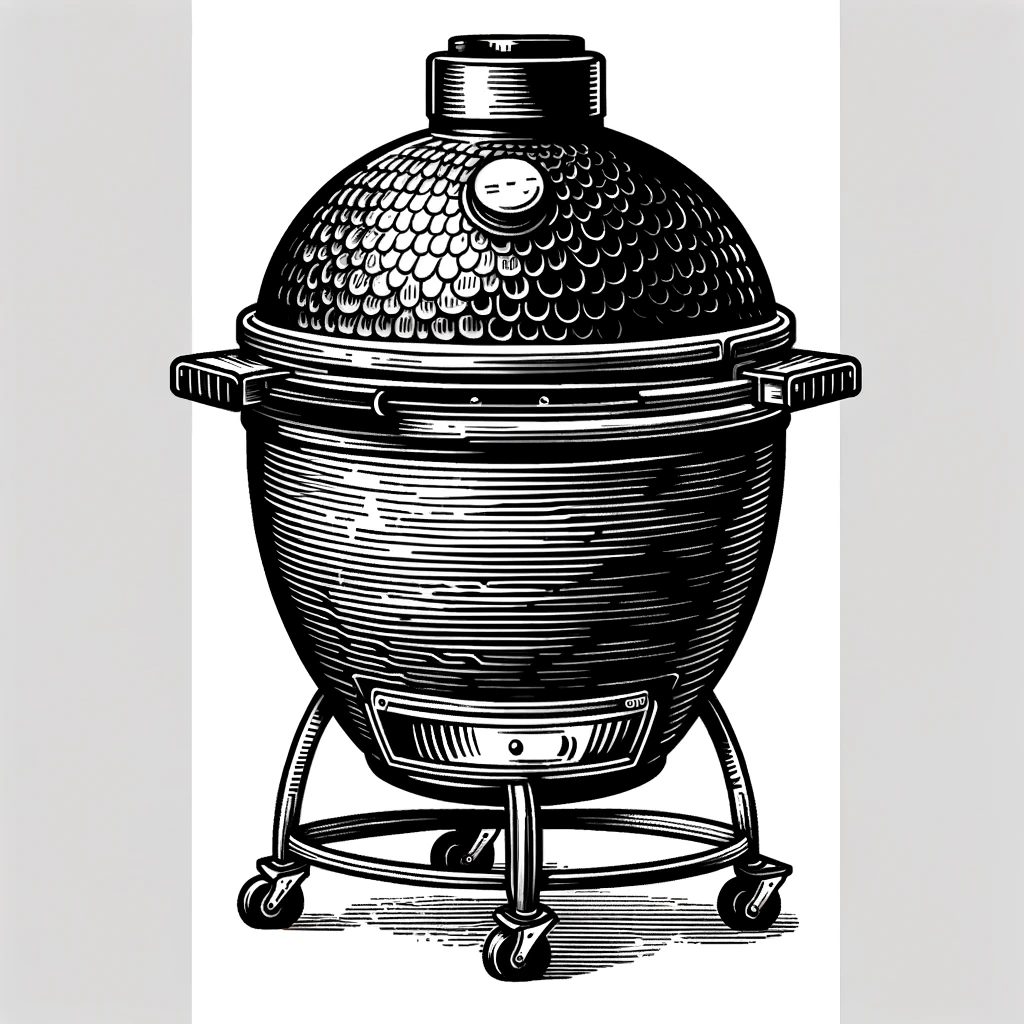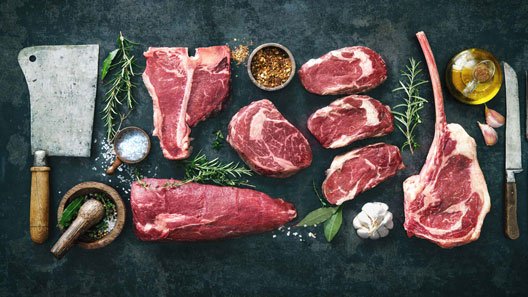When the sun’s out and the garden beckons, nothing beats the sizzle of a barbecue. If you’re looking to invest in a new grill but feel overwhelmed by the choices—pellet smoker, charcoal grill, gas barbecue, Kamado grill—don’t worry! Here’s a short guide to help you understand the pros and cons of each, ensuring you find the perfect match for your grilling style.
1. Pellet Smoker
Advantages:
- Flavorful Results: Pellet smokers use wood pellets that infuse food with a rich, smoky flavor that’s hard to replicate.
- Ease of Use: They are relatively easy to use with digital controls to maintain consistent temperatures, making them great for beginners and those who like to “set and forget.”
- Versatility: These smokers are excellent for both grilling and smoking, able to cook a wide range of dishes from brisket to apple pie.
Disadvantages:
- Electricity Dependent: You’ll need an electrical outlet to operate, which can limit where you can set it up.
- Cost: Generally, pellet smokers are more expensive than other types of grills.
- Complexity: The mechanical parts and electronic components can require more maintenance and potential repairs.
2. Charcoal Grill
Advantages:
- Authentic Taste: Many barbecue purists prefer charcoal grills for the authentic smoky flavor they impart to the food.
- High Heat: Charcoal can reach higher temperatures than most gas grills, ideal for searing meat.
- Affordability: These grills tend to be less expensive and simpler in design.
Disadvantages:
- Longer Start-Up Time: Getting charcoal to light and reach the right temperature can take time and effort.
- Messier: Cleaning up ash and unburnt charcoal can be a chore.
- Temperature Control: It takes practice to master temperature control with vents and charcoal placement.
3. Gas Barbecue
Advantages:
- Convenience: Gas grills light instantly and heat up quickly, making them great for impromptu grilling.
- Easy to Clean: No ash disposal necessary, just a wipe-down and occasional scrub of the grates and burners.
- Control: Easy temperature adjustments allow for more consistent cooking.
Disadvantages:
- Flavor: Some enthusiasts argue that gas doesn’t provide the same flavor profile as charcoal or wood.
- Cost: While there are inexpensive models, high-end gas grills can be quite pricey.
- Safety: Gas grills require careful handling of propane tanks and connectors to avoid leaks.
4. Kamado Grill
Advantages:
- Insulation: Made from heavy ceramic, Kamado grills offer excellent insulation, making them efficient in fuel use and great for slow cooking.
- Versatility: These grills can grill, smoke, and even bake, handling everything from pizzas to cookies.
- Durability: The ceramic construction is robust and can handle a range of temperatures without damage.
Disadvantages:
- Weight: Their heavy weight makes them less portable than other types of grills.
- Price: They are on the higher end of the price spectrum for barbecue grills.
- Learning Curve: It can take some time to get used to the airflow management and temperature control.
5. Indirect Smoker
Advantages:
- Even Cooking: Heat and smoke wrap around the food, cooking it slowly and evenly for tender results.
- Ideal for Large Cuts: Perfect for smoking large pieces like briskets or whole poultry without direct heat.
- Flavor Enhancement: Allows for the addition of various woods, enhancing flavor complexity.
Disadvantages:
- Slow Cooking Process: Not suitable for a quick grill; best for meals planned well in advance.
- Space Requirement: Usually larger and requires more space than direct grills.
- Temperature Management: Requires monitoring and adjustments to maintain low and slow cooking conditions.
6. Dual-Fuel Gas and Charcoal Model
Advantages:
- Flexibility: Offers the quick heating of gas and the flavorful cooking of charcoal in one unit.
- Convenience: Allows you to switch between fuel types based on your time and flavor preferences.
- Space Efficient: Combines two grills into one, saving space in your cooking area.
Disadvantages:
- Complexity: More components to operate and maintain.
- Higher Initial Cost: Generally more expensive due to dual functionality.
- Larger Size: Tends to be bulkier than single-fuel models.
Whether you’re an occasional griller or a dedicated barbecue enthusiast, there’s a grill type that fits your lifestyle and culinary needs. From the simplicity of charcoal to the versatility of a dual-fuel model, choose what best suits your taste and garden aesthetics. Happy grilling!






